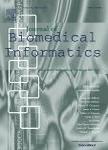版权所有:内蒙古大学图书馆 技术提供:维普资讯• 智图
内蒙古自治区呼和浩特市赛罕区大学西街235号 邮编: 010021

作者机构:Univ Sao Paulo Dept Comp Sci & Math Biomed Informat Grp Av Bandeirantes 3900 BR-14040901 Ribeirao Preto SP Brazil
出 版 物:《JOURNAL OF BIOMEDICAL INFORMATICS》 (生物医学情报学杂志)
年 卷 期:2016年第62卷第0期
页 面:159-170页
核心收录:
学科分类:1001[医学-基础医学(可授医学、理学学位)] 0812[工学-计算机科学与技术(可授工学、理学学位)] 10[医学]
基 金:Sao Paulo Research Foundation (FAPESP) National Research Council of Brazil (CNPq) Amazon State Research Foundation (FAPEAM) National Institutes of Science and Technology Program (INCT) ADAPTA Project (Center for Studies of Adaptations of Aquatic Biota of the Amazon)
主 题:Software framework Reuse Biomedical informatics Information extraction Retrieval and application of biomedical knowledge and information Recommender systems: medical records and scientific papers Ontology
摘 要:A software framework can reduce costs related to the development of an application because it allows developers to reuse both design and code. Recently, companies and research groups have announced that they have been employing health software frameworks. This paper presents the design, proof-of-concept implementations and experimentation of the Health Surveillance Software Framework (HSSF). The HSSF is a framework that tackles the demand for the recommendation of surveillance information aiming at supporting preventive healthcare strategies. Examples of such strategies are the automatic recommendation of surveillance levels to patients in need of healthcare and the automatic recommendation of scientific literature that elucidates epigenetic problems related to patients. HSSF was created from two systems we developed in our previous work on health surveillance systems: the Automatic-SL and CISS systems. The Automatic-SL system aims to assist healthcare professionals in making decisions and in identifying children with developmental problems. The CISS service associates genetic and epigenetic risk factors related to chronic diseases with patient s clinical records. Towards evaluating the HSSF framework, two new systems, CISS+ and CISS-SW, were created by means of abstractions and instantiations of the framework (design and code). We show that HSSF supported the development of the two new systems given that they both recommend scientific papers using medical records as queries even though they exploit different computational technologies. In an experiment using simulated patients medical records, we show that CISS, CISS+, and CISS-SW systems recommended more closely related and somewhat related documents than Google, Google Scholar and PubMed. Considering recall and precision measures, CISS+ surpasses CISS-SW in terms of precision. (C) 2016 Elsevier Inc. All rights reserved.